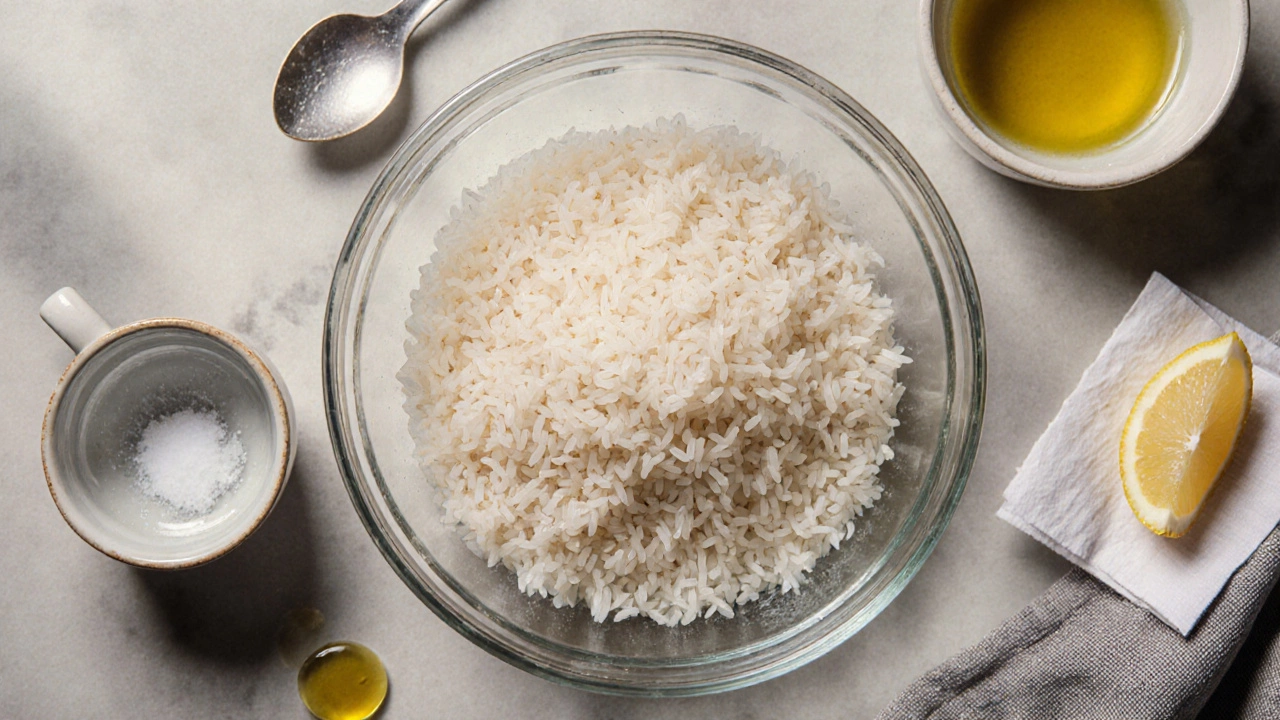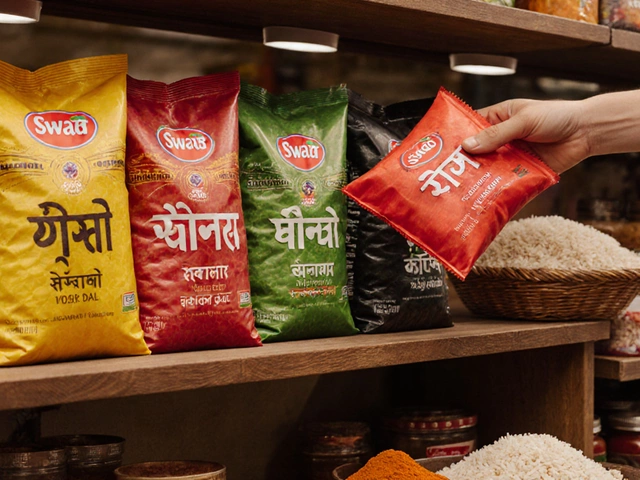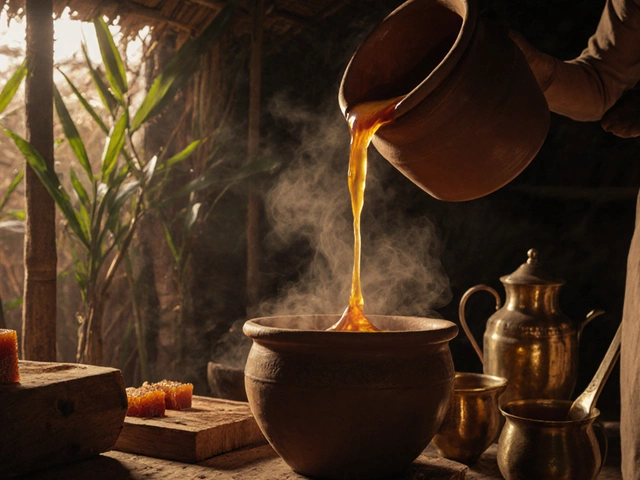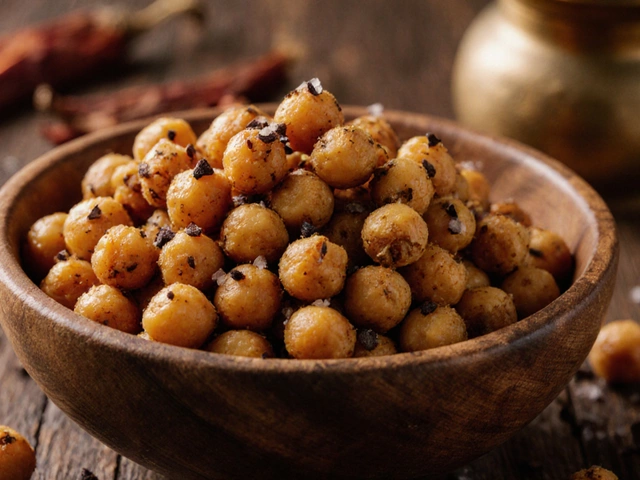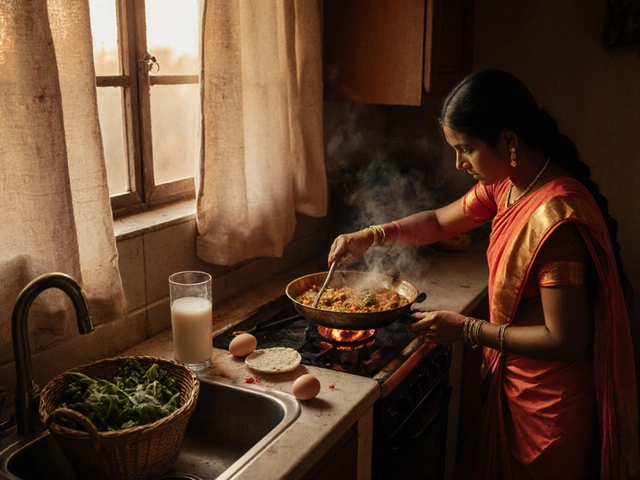Biryani Rice Soaking Time Calculator
Get the perfect soaking time for your basmati rice to make fluffy, separate grains for your biryani. This calculator adjusts for rice age and kitchen temperature.
Recommended Soaking Time:
Key Takeaways
- Soak basmati rice for 30minutes for the fluffiest biryani grains.
- Use a 1.5:1 water‑to‑rice ratio during soaking to prevent over‑softening.
- Rinse thoroughly before soaking to remove excess starch.
- Add a pinch of salt, a few drops of oil, or a slice of lemon to keep the grains separate.
- Adjust soaking time based on rice age: older grains need a bit longer.
Ever wondered why your biryani rice sometimes ends up mushy or clumpy? The culprit is often the soaking step. A simple tweak-how long you let the grains sit in water-can transform a decent biryani into a show‑stopper. Below we’ll walk through the science, the exact timing, and the little tricks that chefs use to keep each grain distinct, aromatic, and perfectly cooked.
Basmati Rice is a long‑grain variety native to the Indian subcontinent, prized for its fragrant aroma and slender, non‑sticky kernels. Because the grains are thin, they absorb water quickly, making the soaking stage critical for texture control.
Biryani is a layered rice‑and‑meat (or veg) dish that relies on separate, fluffy grains to carry the rich spice blend. If the rice is over‑soaked, the layers meld together and the signature “grain‑on‑grain” feel disappears.
Why Soak Basmati Rice at All?
Soaking does three things:
- Hydrates the grain evenly, so it cooks uniformly.
- Activates the natural aroma compounds (mainly 2‑acetyl‑1‑pyrroline) that give basmati its nutty scent.
- Reduces cooking time, which helps preserve the delicate spice layers in biryani.
Skipping the soak can lead to hard centers while the outer layers become mushy-exactly the opposite of what you want for a festive biryani.
Determining the Ideal Soaking Duration
Most Indian cooks recommend a 30‑minute soak for fresh basmati. However, the exact time depends on two factors: rice age and ambient temperature.
Freshly milled rice (less than 6months old) is softer and reaches full hydration faster. For these, 20-30minutes is sufficient.
Aged rice (6‑12months old) dries out, so a 30-45minute soak prevents the grains from cracking during cooking.
In cooler kitchens (below 68°F/20°C), add an extra 5‑10minutes because water absorption slows down.
If you’re in a hurry, a quick 15‑minute soak can work, but you’ll need to watch the cooking time closely-usually an extra minute or two on the stovetop.
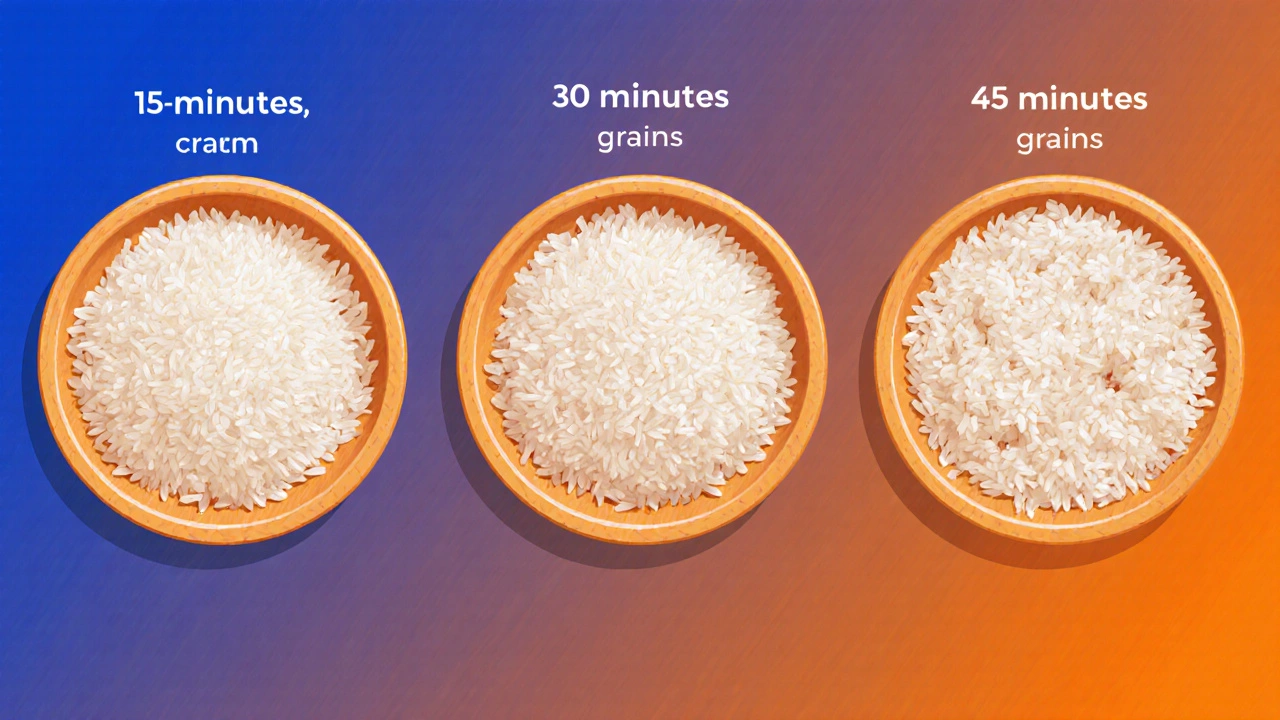
Step‑by‑Step Soaking Process
- Rinse the rice 2-3 times under cold water until the water runs clear. This removes surface starch that makes rice sticky.
- Place the rinsed grains in a bowl and add water at a 1.5:1 ratio (e.g., 1½cups water for 1cup rice). The extra water ensures every grain is fully submerged.
- Add a pinch of salt and a splash (about ½teaspoon) of oil or melted ghee. These fats coat the grains, reducing friction during the final steam.
- If you like a subtle zing, toss in a thin slice of lemon or a few drops of lemon juice. The mild acidity helps keep the grains separate.
- Cover the bowl and let it sit for the chosen duration (20-45minutes). Stir once halfway through to ensure even soaking.
- After soaking, drain the rice using a fine‑mesh sieve. Let it rest for 2‑3minutes to allow excess water to evaporate.
How Soaking Interacts with Other Biryani Elements
When you layer the rice with meat or veg, the steam from the cooking pot finishes the hydration process. Here’s how each component plays a role:
- Saffron infused milk or water adds color and a faint floral note during the final ‘dum’ (sealed steaming).
- Ghee droplets placed on top of the rice create a glossy finish and help lock in aroma.
- Whole spices (cinnamon, cardamom, cloves) are typically toasted before adding the rice, releasing essential oils that penetrate the grains during the final steam.
Comparison of Soaking Times and Resulting Texture
| Soaking Time | Grain Softness (1‑5) | Separation | Cooking Time Adjustment |
|---|---|---|---|
| 15minutes | 2 | Moderate - some clumping | +1minute |
| 30minutes | 4 | High - grains stay distinct | Standard (no change) |
| 45minutes | 5 (very soft) | Low - grains may break | -1minute (risk of mush) |
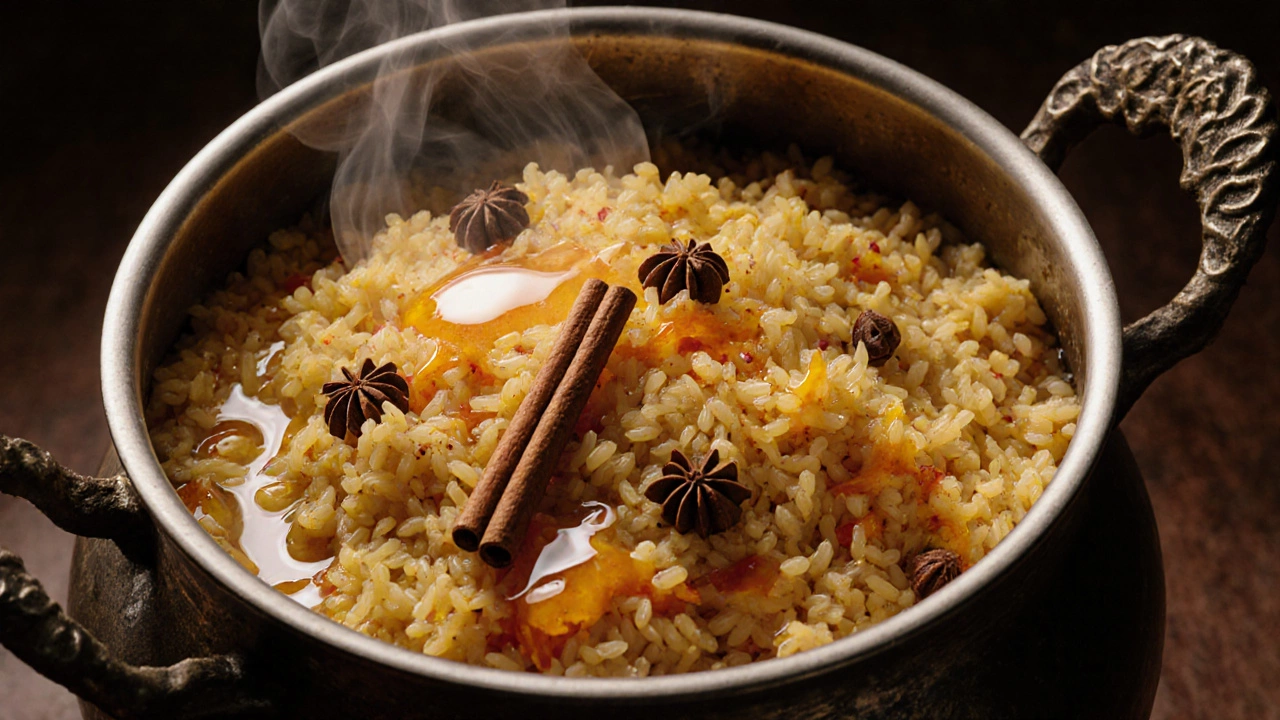
Common Mistakes and How to Fix Them
- Using too much water for the soak. The grains become waterlogged. Fix: Stick to the 1.5:1 ratio.
- Skipping the rinse. Surface starch makes the rice glue together. Fix: Rinse until water runs clear.
- Soaking for more than an hour. Older grains may split. Fix: Set a timer; if you accidentally exceed, drain and pat dry before cooking.
- Cold water in a cool kitchen. Soaking slows, leading to uneven hydration. Fix: Use lukewarm water (around 100°F/38°C) during colder months.
Quick Troubleshooting Guide
If your biryani still turns out mushy after following the steps, consider these adjustments:
- Check the rice brand; some lower‑grade basmati has a higher amylopectin content, which naturally makes it stickier.
- Reduce the final steaming time by 2‑3minutes; over‑steam is a common cause of mushiness.
- Increase the heat slightly during the initial boil (just before the ‘dum’) to create a rapid burst of steam that firms the grains.
Putting It All Together: A Sample Biryani Timeline
- 00:00 - Rinse 2cups basmati; drain.
- 00:05 - Soak in 3cups lukewarm water with salt & oil; set timer for 30minutes.
- 00:35 - Drain; let rest 2minutes.
- 00:37 - Par‑boil rice (2minutes) in salted water; drain again.
- 00:40 - Layer cooked meat, fried onions, saffron milk, and the par‑boiled rice in a heavy‑bottom pot.
- 00:45 - Seal pot with dough, place a heavy weight, and steam on low heat for 20minutes (dum).
- 01:05 - Rest 5minutes before fluffing and serving.
The result? Separate, fragrant grains that hold their shape while soaking up the rich flavors of the meat and spices.
Frequently Asked Questions
Can I soak basmati rice overnight?
Overnight soaking makes the grains too soft and can cause them to split during cooking. If you must prep ahead, limit the soak to 2‑3hours, then store the rice in the refrigerator and rinse before cooking.
Should I use warm or cold water for soaking?
Warm (around 100°F/38°C) water speeds up hydration, especially in cooler climates. Cold water works fine in warm kitchens, but it may require a few extra minutes.
Is it okay to add vinegar or lemon juice to the soak?
A tiny splash of lemon juice can help keep grains separate, but too much acid softens the starches and may make the rice mushy. Stick to a teaspoon per cup of rice.
What if I only have a small amount of rice-do I still need to soak?
Yes, even a half‑cup of basmati benefits from soaking. The proportion of water stays the same; just scale down the quantities.
Can I use a pressure cooker instead of the traditional dum method?
A pressure cooker can produce fluffy biryani if you use the “quick release” after the cooking time. However, the slow dum gives a deeper infusion of spices, so the pressure method is best for a time‑crunch, not for authentic flavor depth.
